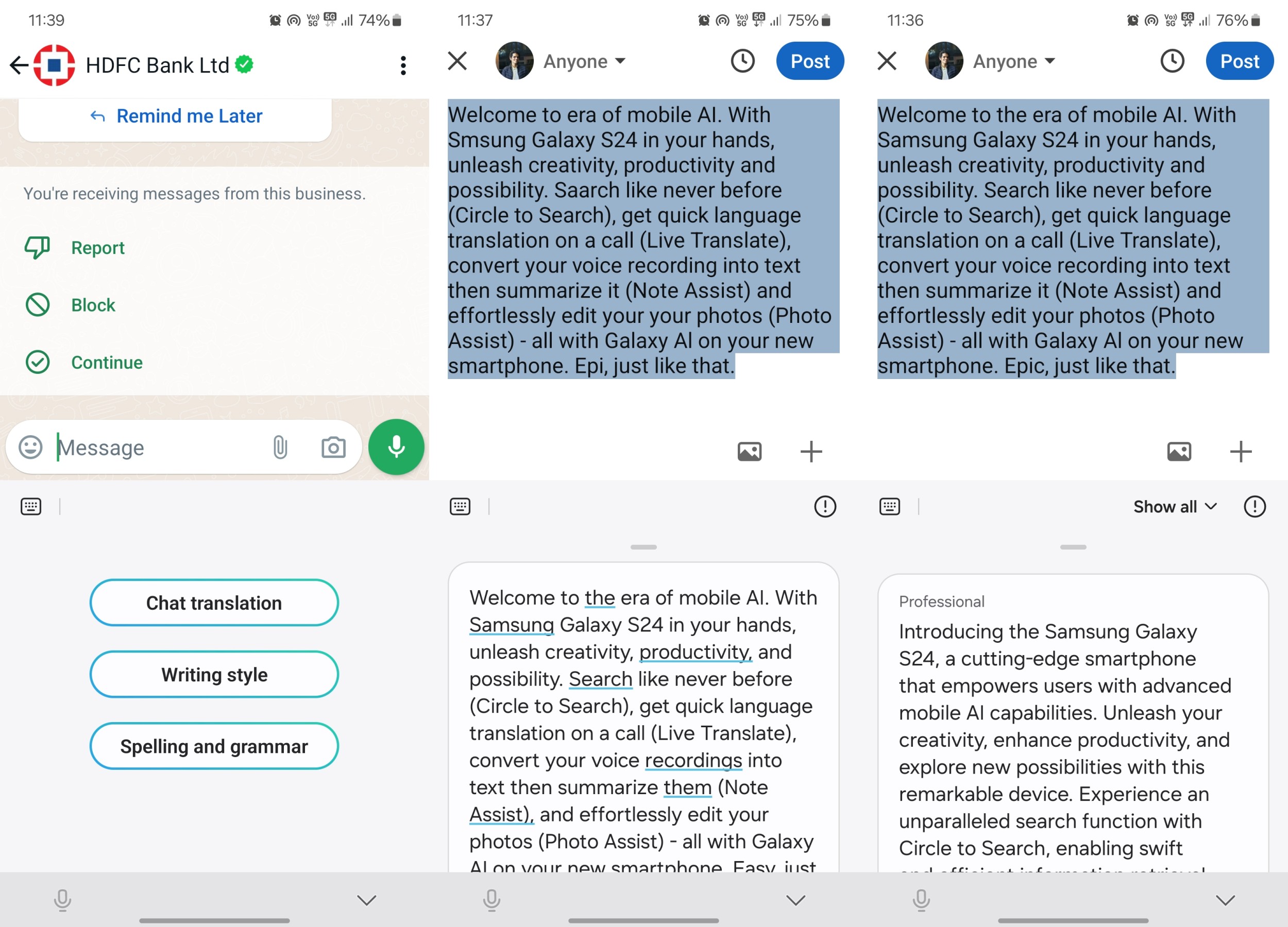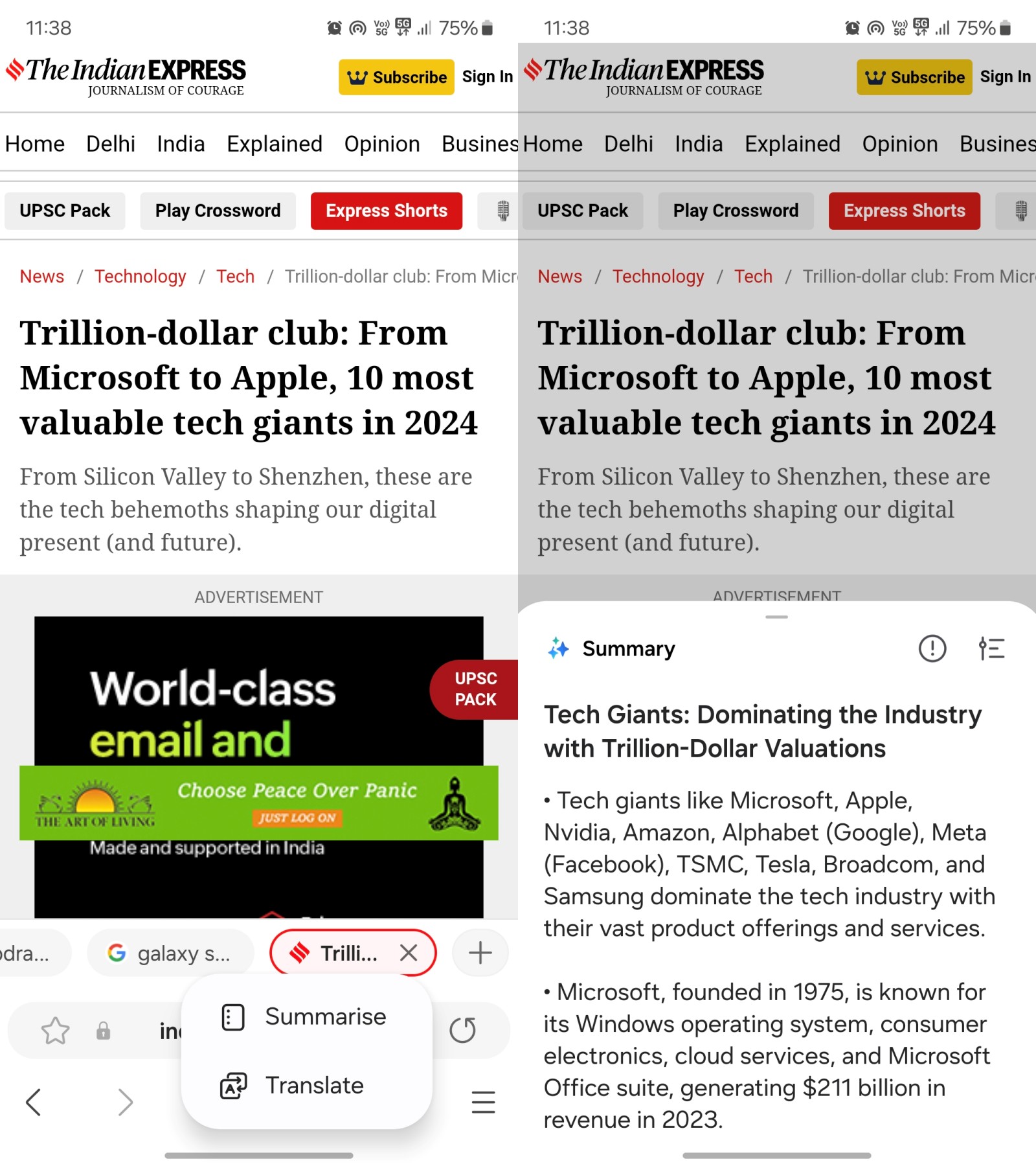The latest flagship phones from Samsung and Google are packing some serious artificial intelligence smarts. Both the Galaxy S24 series and Pixel 8 series are doubling down on AI as a key selling point and productivity enhancer. But just how do their intelligent features actually stack up? Let’s take a look.
The biggest plus the Galaxy S24 series offers is Live Translation that can translate a real-time phone conversation between two different languages using both voice and text. There’s also an Interpreter mode that transcribes and translates a face-to-face conversation for you. The two features are a god-send for people who travel a lot or are in a line of work where they frequently interact with clients who speak different languages.
Samsung has AI smarts baked into its keyboard too with Chat Assist. This can analyse the tone and style of what you’re typing and then suggest re-writings to hit the vibe you want, whether that’s polite and professional or short and snappy for social media.
 (Express image)
(Express image)
Meanwhile, Google’s Gboard offers a more focused generative AI feature called Smart Reply that generates brief responses to some commonly asked questions in chat apps like WhatsApp.
Samsung Note users get an AI assist as well. Note Assist can generate summaries, translate text, format documents, and even create digital cover pages for your notes to make them more glanceable.
Even the Samsung Internet browser has an AI trick – it can Summarise entire web pages for you with a single tap. The Pixel 8 Pro offers a summarise feature too but it’s in the Recorder app designed for recorded conversations, interviews, and presentations.
 (Express image)
(Express image)
Fair to say, the Pixel 8’s AI talents are a bit more specialised. Google phones perfected computational photography and with other brands catching up, the company’s using generative AI to gain an edge in that department.
For instance, the Pixel 8 Pro features a Zoom Enhance feature that can digitally boost your zoom levels far beyond the camera hardware’s optical limits. And for video editing, there’s an Audio Magic Eraser that can use AI to remove or muffle unwanted background noises from your clips.
Last but not the least is Best Take. It lets you swap a person’s face from another image in a series of similar photos. You can use it to produce an image where all are camera-facing, smiling, and have their eyes open.
One standout AI feature that the Pixel has but Samsung lacks is Call Screen – Google Assistant answers calls, avoiding robocalls and scams. On Pixel 8, its voice sounds natural, understanding call context better.
The bottom line is that while Google was the first ‘AI-powered’ phone ever, Samsung seems to have taken the lead (for now at least) on shipping user-facing AI capabilities across so many different apps and services on a smartphone.
What’s the same?
Samsung and Google may seem like competitors but many of the aforementioned generative AI features are the result of a cosy partnership between the two. So it’s no surprise that there’s plenty of feature overlap too. Both the S24 and Pixel 8 share the handy Circle to Search ability where you can simply circle any object, text, or part of an image or video to kick off a Google search on it.
 (Express image)
(Express image)
They’re also applying AI to photography in similar ways, at least with basic enhancements and optimisations. The default gallery apps from each company (Google Photos and Samsung Gallery) offer AI-suggested editing tips, filters, and enhancements on both phones.
Both phones also offer advanced photo editing features that more or less do the same things. On Samsung, The Generative Edit mode can remove entire objects or people from photos while using AI to seamlessly fill in the new background. On Google, the new Magic Editor can completely regenerate backgrounds, reposition people, and upscale low-res shots using advanced AI algorithms.
Lastly, both phones support generative AI wallpapers.
![]() (Express image)
(Express image)
Conclusion
Whichever camp you’re in, it’s an exciting time for AI making its way to our pocket computers in increasingly advanced yet user-friendly ways. While Google still retains an edge in AI-enhanced photography, Samsung deserves credit for figuring out practical AI implementations across so many of its home-grown apps and services.